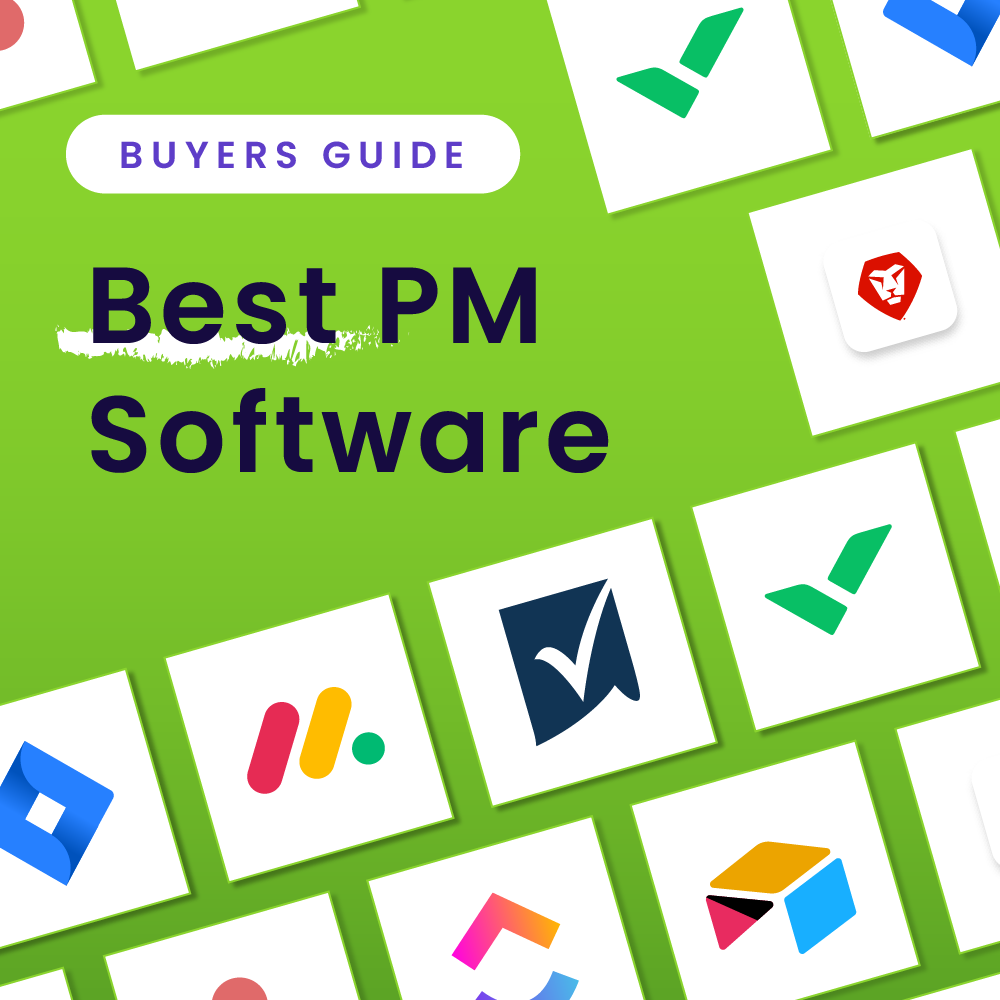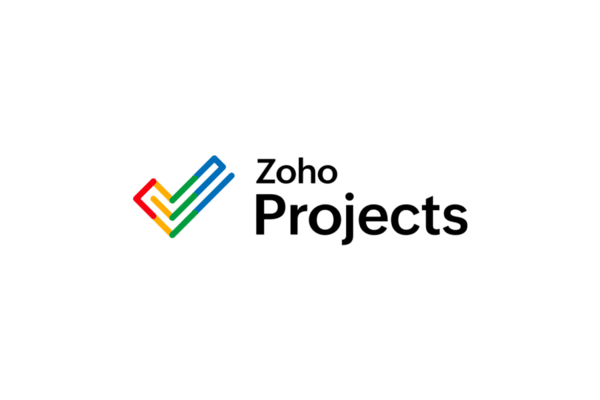In this buyers’ guide, we’ve gathered 10 of the best open-source project management solutions, covering their key differentiators, any other important features, pros and cons, and pricing. Read on to find an open-source project tool that will work for you.
Using open-source project management software is the surest way to give your project teams as much customizability and flexibility as they need. With the open-source code that provides the foundation for this type of software, users can benefit from custom project, task, team, and resource management solutions.
Our Picks: Top Open Source Project Management Software

OpenProject: Best Overall
OpenProject provides its users with a project management tool that can be used for classic, agile, or hybrid open-source project management. With an open-source license under GNU GPL v3, the software gives users the freedom to run, share, study, and modify their version of the software with flexibility. Users even have the option to install the software on-premises within their infrastructure, giving them full control and ownership of their data.
This web-based project management tool provides access and easy sharing of information to all team members. It also has robust project planning and scheduling, project portfolio management, time tracking, and custom workflows.
Aside from the Community edition, a self-hosted on-premises edition and an OpenProject-hosted cloud edition are available, with tiered pricing options and advanced capabilities like Agile boards, SSO, intelligent workflows, and additional security features.

Example of OpenProject’s user interface.
Key Features
- Project portfolio management: PPM features include project hierarchies, custom project fields, reports, templates, and the project overview page.
- Agile, scrum, and kanban features: Alongside a work breakdown structure, several boards are available for Agile project management, including status, team, version, subproject, and task boards. Story Points is a unique Agile feature that helps teams calculate individual and overall effort for project sprints.
- Project scheduling and time tracking: Features include both automatic and manual scheduling modes, date alerts, log management, custom time reports, labor and unit cost management, cost reporting, and budgeting.
Pros & Cons
Pros
Cons
Why We Picked OpenProject
Comprehensive features are available in the free plan with no minimum user requirements. Many features are available across the board to customize OpenProject to specific teams’ needs, with email features for marketing and sales teams, Agile and Scrum features for developers, and OpenProject BIM for construction and architecture teams. Some of its advanced features that differentiate it from other open source solutions include advanced task and dependency management capabilities, project portfolio management, and product roadmap and release planning support. Special rates are also available for educational institutions and NGOs.
Read more: Compare OpenProject vs. Wrike here

Best for Lean Project Management
Leantime is an open-source project management system that can work for teams of all sizes but is best for small teams and startups. The software provides tools for idea management, strategy development, roadmap planning, and task management. It also includes an idea manager that enables users to store ideas, communicate them with team members, and move from idea to validation without confusing early ideas with established project tasks and goals.
Leantime also has planning tools with roadmaps for tracking milestones, calendars for setting meetings and timelines, and a backlog for breaking tasks into smaller subtasks. Other features include report screens, project dashboards, a timesheet manager, to-do lists, white labeling, and multiple user roles.
While Leantime offers comprehensive features to its users, it relies on a lean project management methodology and focuses on making its user interface organized and streamlined enough so no one loses focus. Leantime specifically differentiates itself by advertising to and creating solutions for individuals with dyslexia, ADHD, ADD, and other unique accessibility requirements.

Example of Leantime’s project Blueprint’s feature.
Key Features
- Task management: Task management features include subtask management, dependency management, and various project, milestone, and goal views.
- People-driven management processes: Features include client management, role-specific management, timesheets, and retrospectives to better determine performance goals in the future.
- Documentation options: The ideas feature can be used to track and store pre-project and nascent ideas without cluttering up workspace; the Docs feature allows users to embed external documents or build internal documents, depending on preference.
Pros & Cons
Pros
Cons
Why We Picked Leantime
The simplistic and intentional design of Leantime has proven that it helps users focus on the task(s) at hand. It’s also one of the only tools that caters its features to support accessibility for users with ADD, ADHD, and dyslexia. It also has many creative elements, including design-thinking-driven elements, strong visualizations, and in-app video recording, that make it a great option for creative and design teams that want a customizable open-source option for project management. Finally, Leantime offers a compelling vendor roadmap with coming soon features that include task gamification, AI-driven project management, and more.

Best for Jira Users
Fast-moving Agile teams need a solution that can meet the needs of a highly technical team, from product roadmaps to sprint-supporting features and issue management. While many Agile teams have historically preferred Jira, the per-user price model and the intense learning curve can turn away many users. Plane offers a better middle ground for technical teams that need Agile support with a free price tag and a thoughtfully designed interface.

Key Features
- Data Import Options: Cloud-version users can migrate existing data directly from their previous platform into Plane (such as Jira).
- Customizable Project Cycles: Agile teams can use the Cycles feature to predetermine a time period for completing backlog items and tasks.
- Analytics & Insights: The Frameworks feature enables teams to dive into deeper data insights through burn-down charts, estimates, and more.
Pros and Cons
Pros
Cons
Why We Picked Plane
Plane is a stand-out open-source solution for teams with diverse needs, especially users who are fans of Jira’s flexibility. While paid plans may be made available down the line, Plane’s current free-forever base plan offers a wide range of features to fit the needs of technical teams and more traditional business teams.
Read more: Best Project Management Apps

Best for bug and issue tracking
Orangescrum Open Source is a simple open-source project management and task management solution for teams that focus on bug and issue-tracking management. It enables users to organize all information in one place with clarity on progress, allowing team members to assign, manage, and evaluate the progress of all their tasks. It includes subtasks, groups, sprints, Kanban and Scrum boards, custom labels and types, and task linking among its many features.
Orangescrum also offers user role management, a built-in time tracker, a resource utilization tool, Gantt charts, project templates, and reports, but where it really shines is in its core focus area: bug and issue tracking. Its bug and issue tracking features include centralized bug listings, custom value fields for bug origin and other bug classifications, defect trend charts, an open defects aging report, and granular issue classification.

Orangescrum’s mobile application interface.
Key Features
- Time and resource management: Tasks can be assigned based on specific roles and individual teammate’s availability.
- Budgeting and finance management: Reporting, dashboards, and monitoring of resource costs and project expenses are included with Orangescrum Open Source.
- Cybersecurity management: Security features include SSO and role-based access controls, as well as the self-hosted ability to make security customizations on your own.
Pros & Cons
Pros
Cons
Why We Picked Orangescrum Open Source
Orangescrum Open Source is a straightforward open source solution with strong bug and issue tracking features. Its compatibility with the other versions of Orangescrum, including Orangescrum CRM, make this a highly scalable tool and a great option for teams that aren’t sure if they want to commit to an open source solution or not. Orangescrum offers particularly robust support for teams that move from Orangescrum Open Source to Orangescrum Cloud. Additionally, advanced security features are natively available without too many customizations required.
Read our Orangescrum review
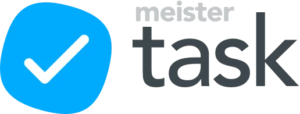
Best Usability and Interface
It’s no secret that many open-source project management systems aren’t exactly user-friendly. MeisterTask gives users the flexibility and personalization options of an open-source project management platform with an appealing and easy-to-user interface on par with some of the best traditional project management solutions. Individual user checklists, multiple project views, and a convenient mobile app are just a few of the top features that make MeisterTask stand out as a top open-source platform.

Key Features
- Built-In Time Tracking: MeisterTask includes built-in time tracking to manage resources and easily track team performance.
- Subtasks and Multiple Checklists: Organizing tasks are made easier by subtasks, task dependencies, and the ability to add multiple subtask checklists.
- Flexible Content Blocks: Users have the flexibility to add plain text, files, embeds, headings, and more within projects and tasks using blocks.
Pros and Cons
Pros
Cons
Why We Picked MeisterTask
One of the biggest barriers that prevent users from branching into the world of open source project management software is usability. MeisterTask is approachable and appropriate for new users while packing in all of the granular customization options and privacy settings users expect from an open-source platform. In addition to stellar us

Best for User Support Resources
Based on a Ruby on Rails framework, Redmine’s an open source project management web app supports multiple projects with Gantt chart and calendar views, multiple databases, and role-based access control. It also supports multiple LDAP authentication from a directory server, like MS Active Directory.
In addition to the features covered above, Redmine offers built-in time tracking and allows the customization of fields for issues, time entries, projects, and users. It supports issue creation by email and integrates with several SCM tools like SVN, CVS, and Git.
One of the main reasons users select Redmine is its extensive collection of customer support resources. An extensive wiki, a user’s and developer’s guide, an FAQ, Redmine forums, a chatroom, and an unofficial Slack workspace are all available, giving users multiple options for self-service problem-solving. If a problem moves beyond the skillsets or knowledge of your team, users still have the option to submit bug reports, patch requests, and feature requests.

Example of the project completion tracker in Redmine.
Key Features
- Document and communication management: Features include news management, documents management, files management, feeds, and email notifications.
- Security and administrative controls: Features and resources include multiple LDAP authentication support, role-based access controls, and security advisories.
- Software change management: SCM features are available for SVN, CVS, Git, Mercurial, and Bazaar.
Pros & Cons
Pros
Cons
Why We Picked Redmine
Extensive documentation, forums, and self-help options are available to Redmine users. The Redmine roadmap is very transparent and shows how the vendor is constantly working out bugs and fleshing out new ideas for the tool. Users also have the option to contribute to the tool and do not have to have software development experience to do so.

Tuleap: Best for Agile and DevOps Teams
Tuleap is an all-in-one open source project management and software development tool for Agile and DevOps teams. It increases the collaboration of multi-functional teams so they can continuously deliver valuable and compliant software. Some of its key differentiators for Agile and DevOps include test management, Gerrit and Jenkins connectors, Git Enterprise, and business continuity and disaster recovery.
Tuleap is modular software with tools for project management, code versioning, code review, continuous integration, test management, document management, requirements baselining, issue tracking, and product management. It provides both a Scrum tool for managing product backlogs, plan releases, and metrics and a customizable Kanban tool that displays updates automatically.

Example of Tuleap’s interface.
Key Features
- Test management: Users can manage both automated and manual tests, define test cases, split tests into smaller steps, create campaigns, set up Test Plan strategies, create validation campaigns, group test cases, and export test results.
- Requirement and baseline management: Features include advanced workflows for custom requirements and processes, test case generation based on requirements, and Tuleap Baseline for snapshots and reviewable release scopes.
- Tuleap Document Manager: Document features include built-in approval workflows, document history, role-based access controls, versioning, and notifications.
Pros & Cons
Pros
Cons
Why We Picked Tuleap
Tuleap offers a similar design and feature set to developer-driven project management tools like Jira. However, its customizable and flexible format actually makes it a better choice for teams that need more test management, document management, and CI/CD features that they can fit to their requirements. The platform also offers a stronger disaster recovery and business continuity approach than most open source competitors. Finally, it’s easy to switch back and forth between Community Edition and paid editions of Tuleap, so teams can easily scale their features up and down whenever needed.

Odoo: Best for Marketing and Sales Teams
Odoo is a suite of open source business applications that can be used for a variety of business operations and tasks across finance, sales, human resources, marketing, website management, productivity, inventory management, and services like project management. Alone, Odoo’s Agile Project Management app is free to use and includes features like task management, document sharing, graphs and visualizations, and project forecasting.
The Agile Project Management app by itself is pretty simple, however, it’s a great option for teams that want to more seamlessly integrate project management tools with their other business software. It’s a particularly strong option for sales and marketing agencies and teams that want to more effectively manage their digital marketing, marketing automation, point of sale, and customer experience tasks by integrating Odoo Agile Project Management with Odoo’s many sales and marketing apps.

Example of task tracking features within Odoo, with progress tracking.
Key Features
- Availability-driven project scheduling: Team members can be scheduled on projects based on their availability and holiday schedules.
- Communication tools: Users can attach notes and files to project tasks, use a shared notepad, or communicate through a live chat while using Odoo.
- Graphs and visualizations: Project-level and task-level visualizations are available to Odoo Agile Project Management users; users can filter, group, and search through their data to create visualizations that make sense.
Pros & Cons
Pros
Cons
Why We Picked Odoo
On its own, Odoo isn’t necessarily the best open source project management solution, but it is one of the best for native integrations with other open-source business tools. E-commerce, marketing, sales, supply chain, and a variety of other teams can benefit from this suite of software that incorporates project management with other useful apps.

ZenTao: Best for Application Lifecycle Management
ZenTao is an open source tool that is primarily used for Scrum and Kanban project management. The tool is also compatible with waterfall frameworks and can be customized to meet the specific needs of your team or methodology. Although the solution is primarily accessible through the ZenTao mobile app, users can also take advantage of the desktop integration for ZenTao Desktop, using this version to continue editing your setup and keep track of notifications.
ZenTao is one of the best options available for application lifecycle management, offering a variety of robust and highly visual features to keep track of products and sprints. The Story/Plan feature and Release/Roadmap feature in particular help to keep everyone on the same page with visual representations of project progress. Other key differentiators from ZenTao include attendance management, source code management, and server room and network topology management.

Example of the ZenTao dashboard with overview widgets.
Key Features
- Product and feedback management: Features include Story/Plan, Release/Roadmap, feedback on stories and bugs, and reply feedback.
- Sprint management: Features are available to manage at a task, team, and build level; burndown and Kanban visualizations help with sprint performance and time tracking.
- Source code management: Features include integration with Git and SVN, the ability to review and comment on code online, and links to stories, tasks, and bugs.
Pros & Cons
Pros
Cons
Why We Picked ZenTao
ZenTao provides comprehensive application lifecycle management features to its users, making it possible for them to manage the most granular details of product development and release roadmaps. The software integrates with Git, SVN, and SonarQube, furthering its capabilities when it comes to product development and release. ZenTao also offers users strong visualization options, including burndown charts.
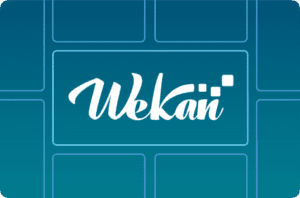
WeKan: Best for Security Features
WeKan is a free open source project management solution that is almost solely designed for Kanban project management. It is licensed under the MIT license, translated into more than 70 languages, and available for a variety of operating systems and CPU platforms. WeKan’s team strongly encourages users to take advantage of one-click installation and self-host the tool on their own computers and servers.
While WeKan is one of the most limited in functionality on this list, it provides users with an effective and easy-to-use Kanban solution. The platform also integrates with many third-party tools and can be customized extensively, so users have the option to add more features as they go.
But what really makes WeKan stand out is its commitment to top-tier security. Users have the ability to disable public boards, WeKan provides transparent security disclosures, and password hashing is also available. WeKan customers have the option to select either Standalone WeKan Security or Sandstorm Wekan Security, depending on their specific requirements. Additionally, users can report security issues in a secure manner, using WeKan’s PGP public key rather than creating a GitHub issue.

Example of the Kanban style layout within WeKan.
Key Features
- Kanban design: With WeKan’s approach to Kanban, users can access boards with columns, drag-and-drop cards, and customizable labels.
- Burndown charts: WeKan offers a Python burndown chart, a burndown chart Chrome extension, and velocity chart options.
- Swimlanes: To better differentiate individual tasks, WeKan offers the Swimlanes view and allows users to rename, reorder, and archive their swimlanes as needed.
Pros & Cons
Pros
Cons
Why We Picked WeKan
It’s hard to get simpler than WeKan, especially if you’re looking for Kanban features. The visual components of this tool are clean and easy to use, and much of the tool relies on drag-and-drop and one-click functionality, etc. Despite its simplicity, WeKan still presents users with a useful tool through an effective UX/UI design, strong security and administrative controls, and a transparent product roadmap.
Methodology
Pricing
| Our Picks | Best For | Pricing Starts At |
|---|---|---|
 Visit OpenProject | Best Overall | 14-day free trial for paid plans • $0 per user per month for Community plan Read details |
 Visit Leantime | Best for Lean Project Management | Free for up to three users Read details |
 Visit Plane | Best for Jira Users | $0 per user per month for Plane Free Read details |
 Visit Orangescrum Open Source | Best for Bug and Issue Tracking | $0 per user per month for Orangescrum Open Source • Paid, closed source versions are also available Read details |
 Visit MeisterTask | Best Usability and Interface | $12 per user per month Read details |
 Visit Redmine | Best for User Support Resources | $0 per user per month Read details |
 Visit Tuleap | Best for Agile and DevOps Teams | Community edition: 0€ per user per month for limited features • Paid starts at 6€ per user per month Read details |
 Visit Odoo | Best for Marketing and Sales Teams | $0 per user per month for unlimited users • Additional costs for teams that require more than one Odoo app Read details |
 Visit ZenTao | Best for Application Lifecycle Management | $0 per user per month for unlimited users and projects in the Community Edition Read details |
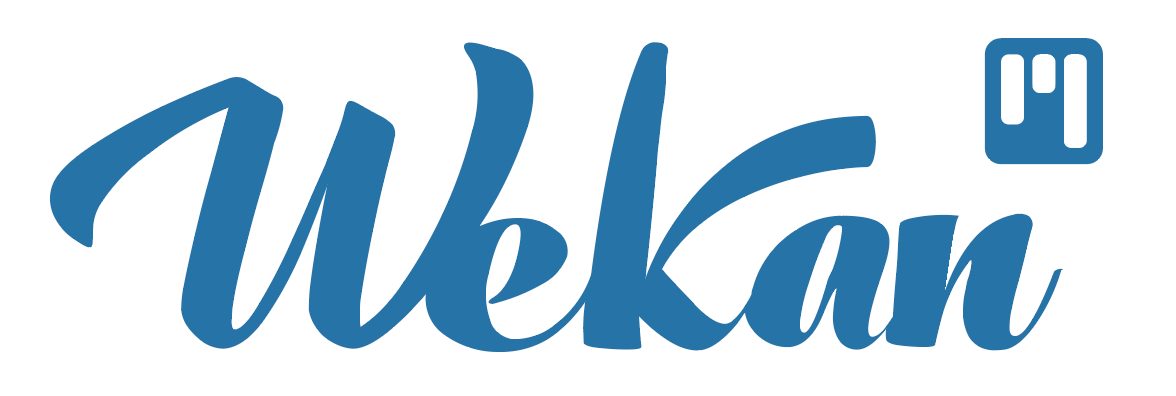 Visit WeKan | Best for Security Features | $0 per user per month Read details |
What Are the Key Features of Open Source Project Management Software?
When looking for the right open source project management software for your business, make sure you look at solutions that offer these key features:
- Source code documentation and availability: With source code documentation, developers on your team can see how the tool is currently set up and determine what changes they want to make and what changes are possible for your own version of the tool. Bonus points if you find a tool that securely stores this information and any changes you make.
- Resource management and time tracking: A number of closed source project management solutions offer resource management and time tracking for an added fee, but if you find the right open source solution, these features are available for free through some customization on your part. With resource management and time tracking, your team can more easily measure performance and time spent across your entire project portfolio, leading to better and more efficient outcomes.
- Collaboration and communication features: Many open source project management solutions natively offer the ability to leave comments on project line items, documents, and more. Others include live chat and/or third-party integrations with communication tools.
- Various project views and customizability: While some open source project management solutions don’t have as many view options as closed source software, they usually have a handful of customizable views that are designed with developer needs in mind. Common project views in open source project management software include Kanban, Gantt, and calendar views.
- Project scheduling and task management: Task and subtask-level management features allow your team to get into the details of a project, scheduling both big picture goals and individual responsibilities and milestones that will get you there.
What Are the Key Benefits of Open Source Project Management Software?
Using open source project management software can introduce a number of benefits into your project management workflow, but these are the top three benefits that come from implementing open source project management software:
- Increased customization options: With access to the PM too’s source code and documentation, your team is given transparent information about what they can do to customize the tool. Many open source solutions can be deployed either in the cloud or on-premises, as well as across a variety of operating systems; this flexibility makes it so you can use open source tools whenever, wherever, and however works best for your team.
- Affordability: Most open source project management solutions are available in a free plan, or at least through a free trial option. Even paid versions of open source PM software tend to be reasonably priced and lower than most closed source alternatives.
- Strong community support network: Although most open source tools don’t have as much dedicated hands-on support offered by vendors, they have a strong collaborative approach to support that works well for the right user. Community forums, group chats, wikis, and collaborative coding options make it so your team can teach and learn from other users of the tool.
FAQs
How to Research Open Source Project Management Solutions
For users who are exploring open source project management software for the first time, it can be intimidating to find reliable information and reviews of the solutions available on the market, as open source software can be an incredibly niche topic that lacks the type of mainstream coverage that traditional project management solutions have. In order to properly evaluate the options available yourself, consider exploring sites, such as Reddit or Github, to read user reviews directly.
How to Choose the Best Open Source Project Management Solution
Choosing the best open source project management solution can be tricky, especially since there are so many options that suit teams of different sizes and industrial backgrounds. And while open source project management software tends to be affordable, users who do not effectively research their options may end up with a tool that doesn’t meet all of their requirements or costs too much to scale.
If your company prioritizes free software options, choose Redmine, Leantime, or ZenTao. These tools are not only free but also offer comprehensive features in their free plan versions. Additionally, many of these plans give access to unlimited users for unlimited projects at little to no cost.
If your company prioritizes a smooth user experience, choose Plane, ProjectLibre, Orangescrum Open Source, or OpenProject. Reviewers of these tools frequently talk about their ease of use and even compare them to popular closed source solutions like Jira and Microsoft Project.
Regardless of where your priorities lie when selecting open source project management software, be sure to do your own hands-on research of these tools, especially the ones that offer free versions or trials. You and your team can make a more informed purchasing decision once you’ve had the opportunity to get familiar with a few different open source software platforms.

